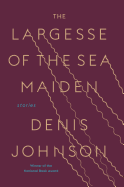
| Publisher: | Random House | |
| Genre: | Short Stories (single author), Visionary & Metaphysical, Literary, Fiction | |
| ISBN: | 9780812988635 | |
| Pub Date: | January 2018 | |
| Price: | $27 |
| Starred | Fiction |
by Denis Johnson
With the death of National Book Award-winner Denis Johnson (Tree of Smoke) in May 2017, one of the most distinctive voices in contemporary American fiction was silenced. The Largesse of the Sea Maiden, a collection of five short stories that showcases his memorable style, will delight his fans and should attract new readers to his work.
Drug addiction, alcoholism and other aberrant behaviors plague Johnson's characters. Indeed, two of the stories are set in a rehabilitation center and a county lockup, neither of whose residents appear to be on the path to recovery or redemption. Illness, murder, suicide and death in other forms are recurring events, and yet the stories are more noteworthy for their smart, bleak humor than for their grimness. Representative of these qualities is "The Starlight on Idaho." In it, Mark Cassandra, relying principally on letters to relatives, friends, Pope John Paul II and Satan, describes his "third time in rehab"--but "first time to make it past four days"--at the Starlight Recovery Center, a converted motel in Ukiah, Calif.: "a salvage yard for people who totaled their souls." Bill Whitman, an ad man in the twilight of his career, narrates the collection's title story. He is in New York City to collect an award for his work when the story delivers an edgy assortment of incidents involving a death row inmate, the suicide of a prominent painter and the confusion engendered by a phone call from Bill's dying ex-wife, their first conversation in 40 years.
Denis Johnson's world isn't necessarily one in which anyone would want to live, but, as these vivid stories illustrate, it's a most entertaining place to visit. --Harvey Freedenberg, attorney and freelance reviewer
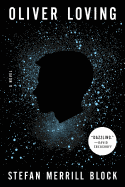
| Publisher: | Flatiron | |
| Genre: | Family Life, Small Town & Rural, General, Literary, Fiction | |
| ISBN: | 9781250169730 | |
| Pub Date: | January 2018 | |
| Price: | $26.99 |
| Fiction |
by Stefan Merrill Block
Set in a wasted West Texas township between artsy Marfa and sleepy Marathon, Stefan Merrill Block's third novel (after The Storm at the Door and The Story of Forgetting), Oliver Loving, ruminates on the consequences of a seemingly random shooting at a high school homecoming dance. Sixteen-year-old Oliver Loving took a bullet during the bloodshed. For 10 vegetative years he has been on life support in "Bed Four" at Crockett Assisted Living Care Facility, among the aged and Alzheimer's victims.
Broken but still hopeful, his fragile mother, Eve, visits vigilantly. She shoplifts Tolkien novels and Dylan music to try to reach him with familiar pleasures. His father, Jed, a failed artist and former high school art teacher, moved to a garage shack in Marfa to sculpt desert trash and drink George Dickel. His younger brother, Charlie, escaped Presidio County for Brooklyn, where he cruises gay bars and half-heartedly scribbles a journal about Oliver that he hopes to sell. Conscious or unconscious, Oliver is at the center of Block's narrative, but the real story is the Loving family's dissolution and buried resentments swirling among the landscape's raw emptiness.
With pinpoint accuracy and rich metaphor, Block's prose equally captures the psychological nuances of loss. The driving mystery of Oliver Loving may be the why of the shooting, but Block's story gets its powerful depth from his eloquent exploration of what he frequently refers to as the before and after of it. --Bruce Jacobs, founding partner, Watermark Books & Cafe, Wichita, Kan.

| Publisher: | Pegasus Books | |
| Genre: | Collections & Anthologies, Mystery & Detective, Traditional, Fiction | |
| ISBN: | 9781681776309 | |
| Pub Date: | January 2018 | |
| Price: | $25.95 |
| Mystery & Thriller |
by Leslie S. Klinger, editor
In the Shadow of Agatha Christie: Classic Crime Fiction by Forgotten Female Authors 1850-1917, edited by Leslie S. Klinger, is a thoughtfully selected, entertaining collection of 16 Victorian- and Edwardian-era short fiction pieces by female authors who "paved the way" for Agatha Christie's entry into the genre. Their stories feature an inspiring cast of female heroines, including a spirited female detective outsmarting her male counterpart and a courageous private investigator undercover as a lady's maid. There's even a debutante detective, Violet Strange, who leaves a ball mid-dance and races to the scene of a crime while still wearing her exquisite gown.
Klinger (In the Shadow of Sherlock Holmes) is well practiced in the art of exposing worthy but mostly unremembered contributors to early crime and mystery fiction. With In the Shadow of Agatha Christie, he offers the reader a colorful selection of stories by British, Irish, European, American and Australian authors, including the Hungarian-born Baroness Orczy (The Scarlet Pimpernel). In her short story "The Regent's Park Murder," Orczy conjures a cozy murder mystery set against the backdrop of foggy Victorian London, with all the clever elements of a successful Agatha Christie drama.
Set primarily in domestic and social settings evoking the preoccupations of their time, stories such as "Mrs Todhetley's Earrings," "The Case of the Registered Letter," "The Adventure of the Clothes-Line'" and "The Ghost of Fountain Lane" contribute in the most delightful way to the dawning of critical literary success for female writers of crime and mystery fiction. --Shahina Piyarali, writer and reviewer

| Publisher: | Pegasus Crime | |
| Genre: | Mystery & Detective, Crime, General, Thrillers, Fiction | |
| ISBN: | 9781681776286 | |
| Pub Date: | January 2018 | |
| Price: | $25.95 |
| Mystery & Thriller |
by Mason Cross
While Don't Look for Me is the fourth book in Mason Cross's high-octane thriller series featuring former black-ops manhunter Carter Blake, it's the perfect point to start for those who haven't read the earlier novels. This volume answers a lot of questions about Blake's history and, unlike the previous mysteries, this new case involves him personally.
In 2010, Blake tells his partner Carol Langford to disappear for her own safety after the assassination of her boss, a U.S. senator. She leaves him a note: "Don't look for me." Six years later, former news reporter Sarah Blackwell is intrigued by her new neighbors, Rebecca and Dominic Freel. She slowly befriends Rebecca, but before she can figure them out, they suddenly vanish. After witnessing some men sneaking into the Freels' home and leaving with a laptop, Blackwell investigates and finds a notebook containing Carter Blake's e-mail address. When she contacts him, he agrees to help. A few cities away, three men hire trained killer Trenton Gage to track down Dominic Freel, who has something they want. Who will find the Freels first?
Cross ratchets up the tension with brief chapters and shifting POVs. Blake narrates his portions; the actions of Blackwell and Gage are in third-person. While Blake withholds information, readers can enjoy sorting through clues with Blackwell as she pieces things together. All three characters are smart and pleasingly complicated. Don't Look for Me is enjoyable and action-packed, with violent twists and clever plotting. --Kevin Howell, independent reviewer and marketing consultant
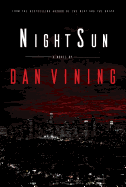
| Publisher: | Rare Bird Books | |
| Genre: | Urban, Dystopian, Apocalyptic & Post-Apocalyptic, Fiction, Noir, Science Fiction | |
| ISBN: | 9781945572647 | |
| Pub Date: | January 2018 | |
| Price: | $24.95 |
| Science Fiction & Fantasy |
by Dan Vining
Thriller writer Dan Vining (Among the Living) deftly combines mystery and dystopia in NightSun. Set in 2025 Los Angeles, this world features a severe drought, cheap energy and traffic so bad that emergency personnel have taken to the sky.
L.A. cop Nate Cole flies across the city every night in his lightweight personal helicopter, accompanied by a young gunner and a virtual assistant. The official explanation for a recent spate of senseless murders is gang violence, but Nate begins to suspect there might be more to it, including drug sales, human trafficking and maybe even a bad cop or two.
Although he lives a relatively isolated existence, he sometimes crosses paths with Ava, a private investigator who is just as much of a loner. The two occasionally help each other with cases. Ava is trying to untangle what started as a simple case: a heartbroken man looking for his missing lover. In this new L.A., though, nothing is as it seems, and Ava's investigation takes her to Vivid, a pop star with a cult-like following.
This is not your typical detective novel. Vining uses Nate and Ava and the cases they are investigating to delve into the details of life in this strange near future, with its loneliness and isolation. As in life, there are no neat answers here, but the combination of intriguing mysteries and the near-future world make NightSun a gripping read. --Suzan L. Jackson, freelance writer and author of Book By Book blog
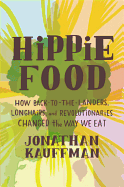
| Publisher: | Morrow | |
| Genre: | Agriculture & Food, Cooking, Social History, Popular Culture, General, History, Social Science | |
| ISBN: | 9780062437303 | |
| Pub Date: | January 2018 | |
| Price: | $26.99 |
| Food & Wine |
by Jonathan Kauffman
Where did all this kale come from? Food writer Jonathan Kauffman knows all too well--tofu and lentils defined his 1970s Indiana childhood dinners. Hippie Food is Kaufmann's affectionate history of the U.S. food revolution and how it infiltrated the mainstream.
The cultural shifts of the late 1960s reflected a sense of broken trust on the part of the boomer generation, who had been raised in post-World War II prosperity and then been shocked out of their complacency by the civil rights movement and the Vietnam War. Distrust of institutions and mainstream culture festered, and what were once radical fringe ideas about diet spread in a rebellion against "plastic" mainstream food. Kaufmann tells the interconnecting stories of influential groups, farmers, performance artists, food writers and restaurants. Occasional inset boxes define ingredients such as alfalfa sprouts, granola and carob, "the ersatz chocolate with the waxy, insipid taste that traumatized so many children in the 1970s (ahem)." He breaks his story into three eras: the "prehistory" reaching back into the 19th century; the "revolutionary era" 1968-1974; and post-Vietnam War, when "revolution gave way to lifestyle changes." Macrobiotics was one of the first of many movements to promote the idea that diet could create flawless health and a perfect society. Adherents founded food-buying clubs, held meetings and published books and pamphlets. They also chain-smoked, and a few died of malnutrition. Kaufmann explains how the alternative farm-to-table economy failed in many ways but also persists today. "It may have become harder to be a food revolutionary, but it has become a hell of a lot easier to shop like one." --Sara Catterall

| Publisher: | Algonquin | |
| Genre: | Biography & Autobiography, Nature, Animals, Personal Memoirs, Body, Mind & Spirit, General, Mammals, Social Science, Customs & Traditions | |
| ISBN: | 9781616206154 | |
| Pub Date: | January 2018 | |
| Price: | $24.95 |
| Starred | Biography & Memoir |
by Shoba Narayan
When Shoba Narayan moved with her family from New York City to Bangalore, India, the last thing she expected to see, wedged sideways on the elevator in her new apartment building, was a cow. Yet, the sight of it brought a smile to her face; after 20 years of living in the U.S., the cow's presence made her realize she was home again.
The cow belonged to Sarala, the milk lady who sold fresh milk across the street, and it was needed for a housewarming ceremony on the third floor. Good luck would be assured by having the cow in the apartment and even better luck if the cow pooped in the apartment. Hoping for the same auspicious beginnings, Narayan managed to have the cow walk through her new apartment, too, and was soon on a journey into the milk and cow culture of India.
She began buying fresh, raw milk from Sarala, a business arrangement that grew into a deep friendship. Narayan learned to see cows and the culture of cows in India in a new light. And when Sarala approached Narayan with the idea of buying a cow to increase her herd in exchange for free milk, their bond grew stronger.
Using humor and charm, Narayan blends her tale of learning about cows from Sarala and her family with the cultural, religious and historical importance of cows in India. Anyone with the slightest interest in India or cows will find The Milk Lady of Bangalore a delight. --Lee E. Cart, freelance writer and book reviewer
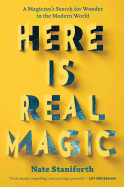
| Publisher: | Bloomsbury | |
| Genre: | Biography & Autobiography, Games & Activities, Inspiration & Personal Growth, Personal Memoirs, Body, Mind & Spirit, Magic | |
| ISBN: | 9781632864246 | |
| Pub Date: | January 2018 | |
| Price: | $28 |
| Biography & Memoir |
by Nate Staniforth
Since childhood, Nate Staniforth has been captivated by magic: he was the kid practicing tricks in front of the bathroom mirror and wowing his classmates by making coins vanish on the playground. After college, he built a successful career as a professional magician, crisscrossing the U.S. on tour. But after years of bouncing between cities, worn down by the grueling schedule and the cynicism he sometimes encountered, Staniforth found himself disillusioned and burned out. Desperate to recapture his sense of wonder, Staniforth headed to India with a friend and only the barest outline of a plan. He recounts his journey--not just to India, but back to a place of awe and delight--in his memoir, Here Is Real Magic.
Staniforth explores the range of human responses to magic: pure awe, outright fear, questions about tricks and techniques. "They didn't just want the answer," he says of his curious audiences. "They wanted the mystery, too." Even amid burnout, Staniforth believed that wonder and mystery do exist in the world, and that he could find them again. In India, he met street magicians whose feats amazed him, but he found equal wonder in his conversations with strangers, which often began with magic tricks but went far beyond that.
Plainspoken, honest and often self-deprecating, Staniforth's memoir is a highly enjoyable exploration of magic and wonder. He invites readers to share in the invitation he receives from a man on a train: "Here is knowledge.... The rest is mystery. There is so much yet to be discovered." --Katie Noah Gibson, blogger at Cakes, Tea and Dreams
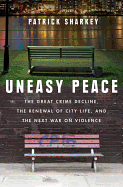
| Publisher: | W.W. Norton | |
| Genre: | Urban, Sociology, Violence in Society, Social Science, Criminology | |
| ISBN: | 9780393609608 | |
| Pub Date: | January 2018 | |
| Price: | $26.95 |
| Social Science |
by Patrick Sharkey
According to Crime Lab New York scientific director Patrick Sharkey, there was an uptick in homicides in the United States beginning in the second half of the 1960s. In the 1990s, criminologists were prophesying doom. Then something unexpected happened: the nation's homicide rate started to decline. In fact, 2014--the year Sharkey began to write Uneasy Peace: The Great Crime Decline, the Renewal of City Life, and the Next War on Violence--was "not only the safest year of the past five decades, it was one of the safest years in U.S. history."
What happened? Gentrification played a part, but Sharkey admits an inconvenient truth for social liberals: mass incarceration was a big factor in the reduction in crime. It wasn't just that more lockups meant less danger to residents of poor urban neighborhoods: less "predator stress" in children's lives led to, for example, measuredly better academic performance. But it's also true that racially biased police strategies had a hand in the crime drop.
Sharkey, a social scientist who wrote a previous book on neighborhood inequality, argues for proven methods to reduce violence that don't infringe on civil rights: collecting and working from data, establishing "urban guardians," and reshaping the relationship between the police and those they serve. Painstakingly researched and deeply compassionate, Uneasy Peace is a natural companion to Matt Taibbi's I Can't Breathe: A Killing on Bay Street--about Eric Garner, the black man who died during an overzealous application of broken-windows-theory policing--a devastating example of the "uneasy" in Sharkey's title. --Nell Beram, freelance writer and author
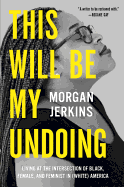
| Publisher: | Harper Perennial | |
| Genre: | Biography & Autobiography, Feminism & Feminist Theory, General, Cultural, Ethnic & Regional, Social Science, Essays | |
| ISBN: | 9780062666154 | |
| Pub Date: | January 2018 | |
| Price: | $15.99 |
| Essays & Criticism |
by Morgan Jerkins
In a confident voice, 20-something Catapult contributing editor Morgan Jerkins shares her experiences as a black, female feminist in the United States. This debut collection "is not a one-size-fits-all tale about black womanhood," Jerkins points out. "The particular experience of the black woman in modern America needs to be addressed. But there isn't just one; there are many. Millions to be exact." Jerkins's alone is the subject of This Will Be My Undoing, and the book allows readers to peer into the lens through which she has viewed the first three-plus decades of her life.
The opening piece, "Monkeys Like You," takes the audience back to Jerkins's suburban New Jersey elementary school, where she tries out for the cheerleading squad unsuccessfully. The description of her disappointment is heartbreaking, and anyone who's failed to make a team or achieve a goal will connect with that feeling of dejection and worthlessness. But the added element of discrimination causes Jerkins to look back later and decide, "It wasn't simply because I wasn't good enough to make the team. I couldn't make the team because I was not human.... And maybe that was what I was really trying out for, not a cheerleading squad, a chance to be a person."
Jerkins's essays present many issues faced by black women, and This Will Be My Undoing is likely just the beginning of her influence on the role of black women in the United States. As she is careful to point out, she is just one voice and her story doesn't speak for all black women, but with any luck her one voice will inspire other voices to add to the chorus of change. --Jen Forbus, freelancer
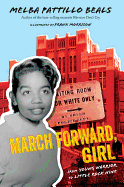
| Publisher: | Houghton Mifflin Harcourt | |
| Genre: | Biography & Autobiography, Women, People & Places, United States - African-American, United States/20th Century, Girls & Women, History, Juvenile Nonfiction, Cultural Heritage, Family, Social Topics, Literary, Historical, Multigenerational, Prejudice & Racism | |
| ISBN: | 9781328882127 | |
| Pub Date: | January 2018 | |
| Price: | $16.99 |
| Starred | Children's & Young Adult |
by Melba Patillo Beals, illust. by Frank Morrison
Journalist and activist Melba Patillo Beals begins her account of her early life for school-age readers by describing the atmosphere of terror in which black Americans lived under Jim Crow laws: "The first thing I remember about being a person living in Little Rock, Arkansas... is the gut-wrenching fear in my heart and in my tummy that I was in danger." At only three years of age, she realized that the culture of her small town was such that "the color of [her] skin framed the entire scope of [her] life." She felt this injustice deeply, even before she had learned the word "segregation."
Nighttime was when her fear was the greatest. "Mother and Grandma would begin the ritual I watched for my entire childhood," she writes. "They would close the windows, draw all the curtains... dim the lights, and silence the radio" in hopes of keeping their home off the Ku Klux Klan's radar. Still, Melba had more than one horrifying experience with the Klan, who terrorized her small town with impunity. In one instance, a black man was lynched in her church as the parishioners gathered for service; in another, she just barely escaped rape and likely murder at a Klan rally.
March Forward, Girl tells Beals's story in a direct, open way that young readers are sure to appreciate. Her writing is approachable and she pulls no punches: the reader is given a clear view of what growing up in the Jim Crow South entailed. Beals ends her narrative right before she became one of the Little Rock Nine, including the very briefest of reports on her high school experience in an epilogue. This is perhaps a perfect way to invite readers to further explore her--and the United States'--history. --Siân Gaetano, children's and YA editor, Shelf Awareness

| Publisher: | Orchard Books | |
| Genre: | Concepts, Words, Books & Libraries, Juvenile Fiction | |
| ISBN: | 9780545865029 | |
| Pub Date: | January 2018 | |
| Price: | $17.99 |
| Children's & Young Adult |
by Peter H. Reynolds
"Some people collect coins. Others collect rocks.... And Jerome?" Jerome collects words. Like a reporter going after a story, young Jerome jots down words while conversing with a friend; when he spies a juicy one in an advertisement; and, of course, while he's reading. Like any collector, he sees beauty in his conquests. Even when he doesn't know what a particular word means, it's still "marvelous to say."
One day, while Jerome is carrying a towering stack of scrapbooks containing words catalogued by theme ("Weather," "French," Whispery" and so on), he trips, and the books go flying. His collection of words scatter: "Big words next to little words. Sad words next to dreamy words." Jerome begins "stringing words together" and discovers poetry. It all sounds rather abstract, but throughout The Word Collector, Peter H. Reynolds has hand-lettered each of Jerome's words on a yellow rectangle representing a slip of paper, giving the boy's treasures a look as concrete and enticing as candy bars.
We've come to expect ebullience from Reynolds, the author-illustrator of books like The Dot, Sky Color and Happy Dreamer, and The Word Collector doesn't disappoint. After Jerome pulls his collection by wagon up a hill so that he can release it into the wind, he has "no words to describe how happy" it makes him to see kids scrambling to pick up the words as if they are dollar bills. Of course, by this point there's a good chance that Reynolds has convinced readers that words have more value than cash. --Nell Beram, freelance writer and YA author